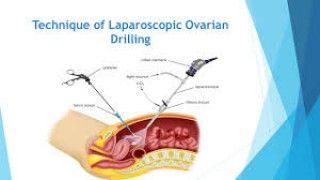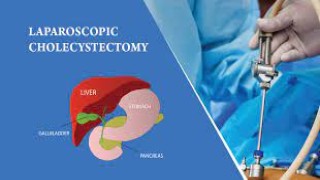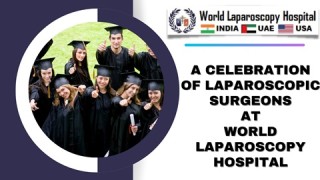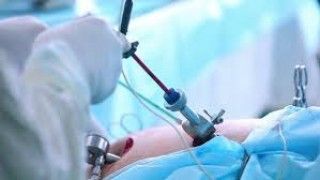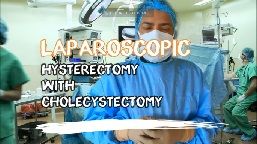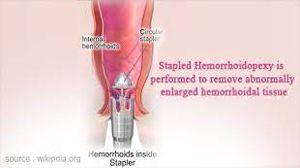Laparoscopic Varicocelectomy: Minimally Invasive Treatment for Varicoceles
Add to
Share
1,906 views
Report
2 years ago
Description
Introduction: Varicoceles are abnormal dilations of the veins within the scrotum, most commonly affecting the left side. They are a common cause of male infertility and can also lead to discomfort or pain. Varicocelectomy is the surgical procedure performed to remove or correct the varicoceles. In recent years, laparoscopic varicocelectomy has gained popularity as a minimally invasive approach offering several advantages over traditional open surgery. This comprehensive article explores the details of laparoscopic varicocelectomy, its benefits, and its role as an effective treatment for varicoceles. Procedure: Laparoscopic varicocelectomy is typically performed under general anesthesia. The surgeon makes small incisions in the lower abdomen to allow for the insertion of specialized instruments and a laparoscope—a thin, illuminated camera that provides a magnified view of the surgical site. With the laparoscope guiding the procedure, the surgeon identifies and carefully ligates the dilated veins, effectively redirecting the blood flow to healthier veins. This improves blood circulation and reduces the pressure within the affected veins, thereby resolving the varicocele. Advantages of Laparoscopic Varicocelectomy: Minimally invasive approach: The laparoscopic technique involves smaller incisions compared to open surgery, resulting in reduced tissue trauma, less postoperative pain, and faster recovery times. The procedure is associated with a shorter hospital stay and fewer complications. Enhanced visualization and precision: The laparoscope provides a high-definition, magnified view of the surgical field, allowing for precise identification and selective ligation of the affected veins. This accuracy helps preserve surrounding structures and reduces the risk of unintended damage. Bilateral assessment and treatment: Laparoscopic varicocelectomy allows for a comprehensive evaluation of both the affected and unaffected sides of the scrotum. This is particularly beneficial in cases where bilateral varicoceles are present or in situations where the contralateral side may develop a varicocele in the future. The surgeon can address bilateral varicoceles simultaneously, minimizing the need for future interventions. Effectiveness of Laparoscopic Varicocelectomy: Laparoscopic varicocelectomy has shown promising results in treating varicoceles and improving fertility outcomes. By correcting the abnormal blood flow and reducing scrotal vein dilation, the procedure can enhance sperm quality and increase the chance of successful natural conception or assisted reproductive techniques. Studies have reported significant improvements in sperm count, motility, and morphology following laparoscopic varicocelectomy. Postoperative Care and Recovery: Following laparoscopic varicocelectomy, patients may experience mild discomfort, which can be managed with pain medication as prescribed by the surgeon. It is recommended to wear a scrotal support garment for a specified period to provide support and reduce swelling. Patients are advised to avoid strenuous activities and heavy lifting for a few weeks to promote proper healing. Regular follow-up appointments with the surgeon are necessary to monitor the recovery process, assess fertility outcomes, and address any concerns or complications. Depending on the individual case, additional fertility evaluations or treatments may be recommended to optimize the chances of successful conception. Conclusion: Laparoscopic varicocelectomy is a minimally invasive and effective treatment option for varicoceles, addressing both the infertility concerns and symptomatic discomfort associated with this condition. The procedure offers advantages such as smaller incisions, reduced postoperative pain, faster recovery times, enhanced visualization, and the ability to treat bilateral varicoceles simultaneously. By improving blood flow and reducing scrotal vein dilation, laparoscopic varicocelectomy can significantly improve sperm quality and increase the likelihood of successful natural conception or assisted reproductive techniques. Its effectiveness in improving fertility outcomes has been supported by clinical studies. Postoperative care and recovery following laparoscopic varicocelectomy are generally straightforward. Patients are advised to follow the postoperative instructions provided by their surgeon, including proper wound care and activity restrictions. They should refrain from engaging in strenuous activities and heavy lifting for a specified period to allow for proper healing. Regular follow-up appointments are scheduled to monitor the patient's recovery progress, assess fertility outcomes, and address any concerns or complications that may arise. The surgeon may recommend additional fertility evaluations or treatments as needed to optimize the chances of successful conception. In conclusion, laparoscopic varicocelectomy is a minimally invasive and effective treatment for varicoceles. Its advantages include smaller incisions, reduced postoperative pain, faster recovery times, and the ability to address bilateral varicoceles simultaneously. By correcting abnormal blood flow and reducing scrotal vein dilation, this procedure can significantly improve sperm quality and enhance fertility outcomes. It provides a valuable option for men seeking treatment for varicoceles and its associated complications, ultimately increasing their chances of achieving successful conception and parenthood.
Similar Videos

